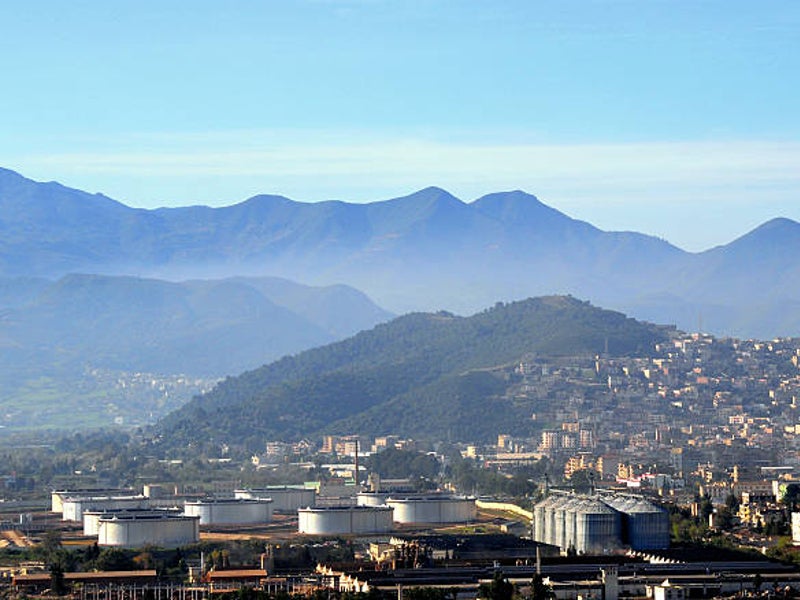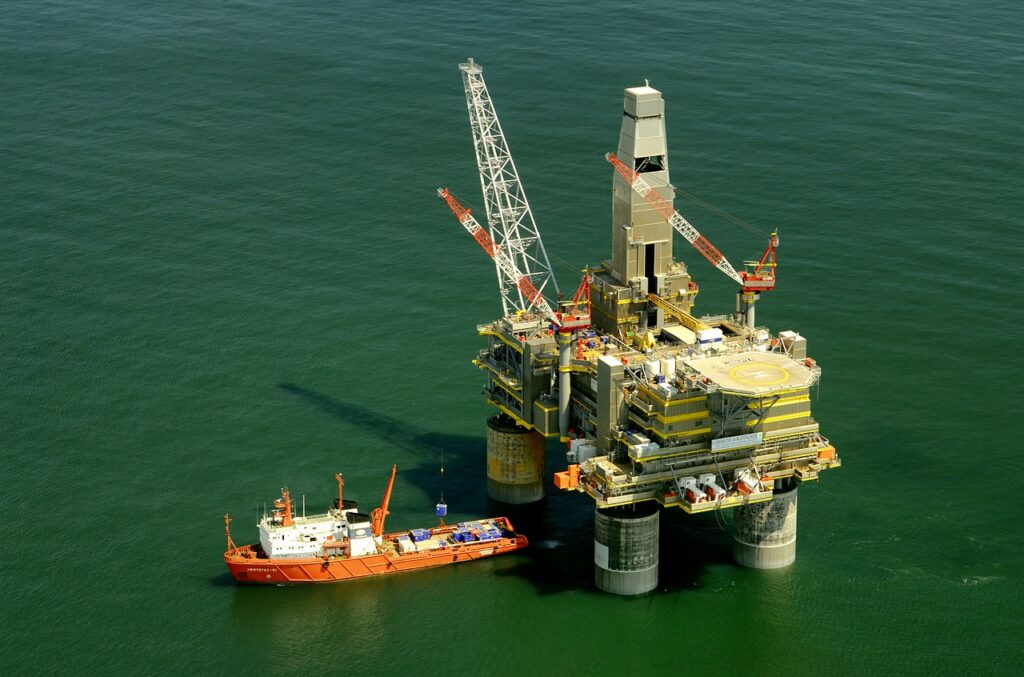
In May, when Royal Dutch Shell announced a series of impending structural changes set to coincide with Peter Voser’s arrival as CEO on 1 July, headlines largely focused on potential job cuts and the new reality of lower oil prices. The organisation’s three upstream businesses – exploration and production (EP), gas and power (GP) and oil sands – have been combined into two new regional units: Upstream Americas and Upstream International.
There have also been changes in Downstream, where its portfolio expanded to include all trading and alternative energy activities, excluding wind.
Voser believes that the new structure “will increase accountability in the company and improve Shell’s performance on delivering new projects and developing new technologies”. This can be an unforgiving process: a month after ringing the changes, 20% of Shell’s senior management had already been let go and a further 740 invited to reapply for only 600 posts.
Within the context of a company that posted a 70% fall in profits in the second quarter of a year it has already dubbed Transition 2009, such developments might appear bleak. However, to describe the mood across the board as one of doom and gloom would be erroneous.
In some quarters, there is more than small cause for optimism.
See Also:
Nowhere is this truer than in the realm of technology. As well as Shell’s two new business units, Voser’s sweeping reforms have created an entirely new Projects and Technology division, responsible for everything from R&D and project delivery to contracting and procurement, as well as safety and environmental performance.
How well do you really know your competitors?
Access the most comprehensive Company Profiles on the market, powered by GlobalData. Save hours of research. Gain competitive edge.

Thank you!
Your download email will arrive shortly
Not ready to buy yet? Download a free sample
We are confident about the unique quality of our Company Profiles. However, we want you to make the most beneficial decision for your business, so we offer a free sample that you can download by submitting the below form
By GlobalDataThe man responsible for ensuring its success is Matthias Bichsel, appointed division director with a seat on the executive committee.
“We had a chief technology officer who was essentially a coordinator,” the Swiss national explains. “This new role has executive responsibility and accountability to deliver all strategic technologies that we’re working on. Effectively, all researchers, scientists and technologists are being brought into the one organisation.”
In a business where integration is becoming increasingly important, the shift appears to be a no-brainer for Bichsel.
The scope of his Projects and Technology division may seem vast, but the advantages such structured focus will bring to developments, upstream and downstream, cannot be underestimated.
“It gives us an opportunity to have a single strategy and approach,” he explains. “It’s leaner, simpler, and reduces the number of interfaces and complexities that a company the size of ours inherently has. We’re going to create bigger jobs, but we will now be able to do that more cheaply and with fewer people. It is a top-down, transparent approach that can pinpoint the areas essential for development and enable individual research programme managers to deliver within a very clear performance management framework. That gives them the freedom to act, but also makes it extremely clear what needs to be achieved at the end of a development period.”
Whole in one
Having a single technology division pushing in the same direction should yield positive results and Bichsel cites the increased importance of heavy oil as a prime example of an area where such streamlined focus will make a real difference. “It has components of the classical EP world in terms of the reservoir and how you get it out of the ground,” he begins, “but there’s also the issue of transportation, upgrading, refining and so on. Bringing all that together and developing technologies without having to worry about a chopped-up value chain will be far easier to achieve.”
While Bichsel is clearly excited by the scope and influence technology enjoys within the new organisational structure, he is at pains to stress that this is the culmination of a long-standing trend within Shell. Having been executive vice-president, technical, Shell Exploration and Production from 2006 until his recent appointment, it is a development with which he has been closely involved.
“We had already brought in a much more focused approach,” he explains. “The technology strategy was driven by asset needs and that will still be the case. Budgets have increased year-on-year since 2004 when [former CEO] Jeroen van der Veer came in and emphasised their importance. Peter [Voser] has picked up that commitment and stated that he wants to focus on innovations that create a competitive advantage for the organisation. That a new business has been formed, with its head seated at the top table, demonstrates that we’re even more determined to leverage technology for furthering the business.”
Scope for innovation
Such emphasis upon “competitive advantage” is telling. The Shell director cites a Society of Petroleum Engineering report that highlighted “120 to 130 areas” where research, development and delivery of new technologies are required: where does one begin?
As margins tighten and profits fall, having a clear appreciation of the innovations and solutions crucial for furthering the business model has never been so essential.
Bichsel highlights two areas, exploration and subsea, where he sees particular scope for innovation, although the balancing act between in-house and bought-in technologies is where most advantage is still leveraged.
Shell has been the industry’s biggest spender on exploration in recent years, buying-in technologies and data as well as developing proprietary algorithms. “It’s in the ability to process and maximise data where competitive advantage is found,” Bichsel explains.
“In the Gulf of Mexico, thanks to the seismic imaging technologies we’ve developed, we’ve been able to see structures others cannot. Nearly all the seismic out there is acquired by the big players – Weston, CGG, PGS. They have their own processing algorithms and modules, which are pretty good, but it’s striking just how much more we can see.”
This nuanced approach is in contrast to the “big picture” products frequently associated with technological advancement. “The issue with technology is that people often want to see a shiny thing, a silver bullet,” agrees Bichsel.
“The oil business is a system: you have a reservoir, you extract oil, bringing it to the seabed, pumping it up to a platform, processing and exporting it. That’s the same for everyone, but within that loop you have opportunities to de-bottleneck; proprietary tools that allow for cleverer discovery and execution.
“It’s about creating a package of technologies. For instance, we have sensors that use satellites for measuring the gradient when we inject steam. Clearly we don’t send our own satellites into orbit, but the use of that data, combined with other readings such as tilt meter data, micro-seismic data and other acquisition parameters we have in situ within the reservoir creates a package that provides unique insight.”
The next-generation reservoir simulator under development at Shell is a further case in point, housing empirical data from across the organisation and creating a unique proposition within its field.
“We’re building that up, particularly for enhanced and improved oil recovery, and creating something unlike anything available on the open market,” Bichsel explains. “The ability to model in a much more detailed way: complex reservoirs, fractured carbonates, ionic composition of water, steam injection. Being able to approach potential partners and offering to throw this into the mix if they allow us to share their acreage is a great value proposition.”
Improved yields
A number of enhanced oil recovery (EOR) projects in the Middle East demonstrate how research and development enable Shell to improve yields, and the advantages that an integrated, streamlined structure brings to the process. “We design and produce polymers, giving us the ability to come up with new designer cocktails and processes,” says Bichsel.
“That is then coupled with the numerous tools we have in place for doing surveillance: the ability to follow and steer steam upon injection, for instance. This is all enabling us to be quite aggressive in terms of the projects we’re taking forward.”
Developments in the Middle East have also seen technology teams experiment with aspects of water composition, a low-cost approach that has significantly enhanced recovery rates. “It doesn’t work in all reservoirs but we are very pleased with the progress that has been made,” Bichsel exclaims.
“This is without the use of expensive chemicals or extensive transport. It’s relatively simple and, unlike most EOR techniques, can be applied offshore.”
While Bichsel sees many areas of subsurface where it is advisable to retain intellectual property rights, engineering solutions are less simple. Shell is not shy when it comes to encouraging and steering the Schlumbergers, Halliburtons and Weatherfords of this world, even collaborating on certain innovations directly, but any successful tools soon become available to all.
One example is the recently completed Real-Time Compaction Imager (RTCI) system, developed with NASA and the US Navy. The system uses thousands of Bragg grating sensors incorporated within a sand screen instrumented with optical fibres to monitor, strain and acquire a three-dimensional high-resolution deformation image of the screen in real time.
It is expected to lead to significant savings in well completions.
Share and share alike
But Shell will not keep this innovation to itself. Baker Hughes is commercialising the technology on behalf of both companies and will launch it on the open market in Q4 of this year.
“We’re not in the fabricating business,” Bichsel explains. “Yes, there are technologies that we have a direct hand in developing. We also engage with the big players and have strategic relationships with them whereby we all sit around a table several times a year and discuss not only ongoing business performance, but also what needs we see coming up on the horizon. The hardware side of things is not an area where we invest a huge amount of research; we go out and buy stuff and, where necessary, try to influence those charged with producing it.”
Cost is a big driver in determining the direction such activity and guidance takes. In the area of optimised drilling, Shell is undertaking extensive work with Varco to improve processes and cut costs.
“In North America especially, where drilling fast means drilling cheap, we are spending a lot of time developing algorithms for improving processes and techniques,” Bichsel explains. “Horizontal wells, where you need very fast data transmission up the string, are a classic case of taking a number of processes and technologies to create a unique package. The results have seen us drilling wells of 15,000–18,000ft with one casing string less than the competition. That saves money and it saves time.”
An appreciation of both present and future needs lies at the heart of any technology strategy. While extensive in-house R&D at Shell is a given, immediate problem solving must also take place.
Bichsel cites the Perdido deepwater project in the Gulf of Mexico, the region’s first Palaeogene development, as a further example.
“It has a few interesting challenges besides water depth,” he begins. “One is that the oil is relatively heavy and the energy in the reservoir is quite low. Compared to the Miocene and Pliocene discoveries, where one has very high production rates from an individual well, these production rates tend to be quite a bit smaller and you have to install a lot of power for artificial lift. Coming up with solutions for the separation of liquids and gas at subsea, or the rises that allow us to have direct vertical access, this is not R&D; it’s good problem solving. We’re talking about engineers taking stuff that has been done elsewhere – in shallow water, for instance – and creating the capability for applying those ideas at a water depth of almost 2.5km.”
Floating solution
Bichsel admits such undertakings are unlikely to get tongues wagging and that it is large-scale developments that capture public imagination. Enter Shell’s 3.5 million ton-per-annum floating liquefied natural gas solution, which has the potential to place gas liquefaction facilities directly over offshore gas fields.
In July, the company signed an agreement with Technip and Samsung for the design, construction and installation of facilities over a period of up to 15 years. “In Australia especially, where we have been successful in exploration, we could really profit from this solution,” says Bichsel.
“It is another example of serious, focused and innovative engineering.”
Elsewhere, requirement for competitive advantage is less pointed and the interests of the industry as a whole must take precedence.
“Building inherently safe, reliable equipment is not an area where we are ever going to compete,” Bichsel explains. “I don’t want to say that we know how not to kill people, then not share the secret of our success. The Arctic is a big focus, if somebody had a spill in the region, it would be a problem for everyone. It’s the industry’s responsibility to find solutions that can convince governments, regulators, NGOs and the public that we are capable of operating safely in these areas. Where technology can be used to achieve this we are more than prepared to proceed jointly and would encourage other companies to do likewise.”
The call for cooperation is heartening but, as Shell and its competitors continue to feel the pinch, how great is the temptation to focus on immediate wins at the expense of the longer-term energy challenge? Bichsel admits such tension can exist, but believes lessons have been learned from past mistakes.
“There can be an attraction to cut the long-term for a year – it always starts as “a year” – and that’s a very dangerous route to go down,” he says. “However, I’ve been in the industry for 28 years and we are now far more open about discussing the mistakes of the past than we once were. Following the crash in ’86 or events in ’97, for example, we saw organisations dramatically cut technology, learning, development and graduate recruitment programmes. We all suffered as a result. People are a little older and a little wiser.”
Nevertheless, when times are tough, projects come under increased evaluation. “Last year we looked at all technology programmes in R&D and worked hard at gauging future impact against cost,” Bichsel explains.
“It’s vitally important we ensure that we’re getting adequate returns and the right things for the money we’re spending. The ability to cull is an essential part of any successful strategy.”
The new structure at Shell would appear to guarantee that such decisions are made with far more clarity of focus than ever before. Bichsel may not be too interested in headlines, but with technology safely ensconced at the heart of its business, Shell should soon be making news for all the right reasons.







